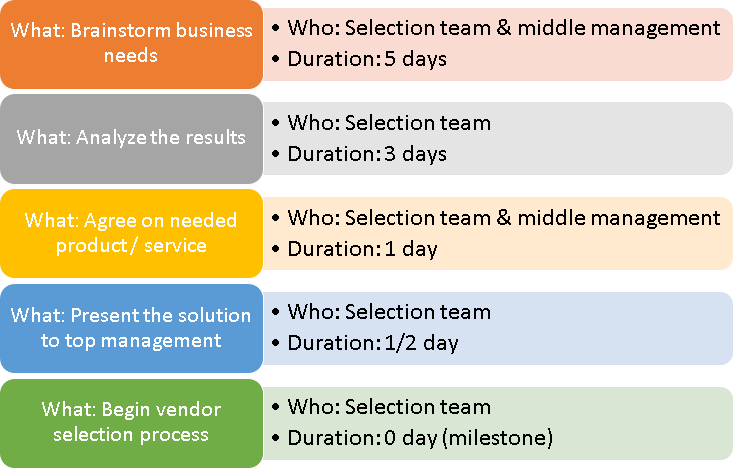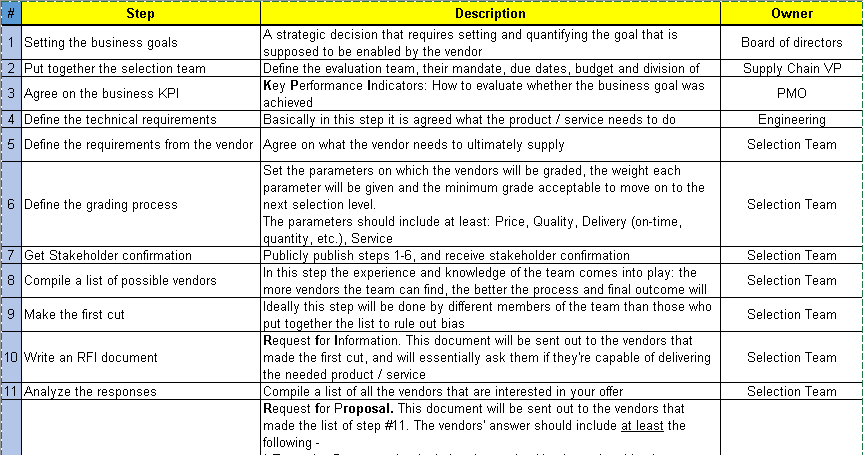Vendor Selection Process with Sample Selection Plan Template
Selecting a vendor is a long and exhausting process, but since the alliance between the chosen vendor and the company has an immense effect on the success of a company, it is well worth the effort.

Vendors can sell either a product or a service. The difference between the two is that a product is manufactured on a certain date, and consumed at a later date (that could be mere seconds). A service is manufactured and consumed simultaneously. We will now look at two different approaches to vendor selection.
Bottom-up Approach For Vendor Selection
- This method entails that the business need comes from the “workshop floor” i.e. middle management or below.
- Since there are many needs and wants, the process of collecting the needs, analyzing them and coming up with a solution that is adequate is a lengthy one.
- The up-side is that the product / service that is eventually bought from the vendor is usually the right one for the company.
- Also the middle management is committed to the solution (since it came from them), and will serve as a stakeholder to it.
- Since the business need comes from 2-3 management stakeholders the process here is a lot quicker and easier.
- The down-side is that it doesn’t necessarily solve the core need of the company, and that the employees won’t be committed to a solution that was thrust down upon them.
Best Practices You Need To Follow
1. Different parameters: There shouldn’t be a one-size-fits-all approach to vendor selection, and each process should take into consideration the following parameters –
- The scale of the project and the needed product / service
- The innovation level (first time vs. on-going)
- The allotted funds
- The timeline (scope) of the project.
2. Always clearly define the required SLA (Service Level Agreement) from the vendor.
3. Use the same tender form for all of the potential suppliers, so you can compare apples with apples.
4. Remember to evaluate the vendor, not just the product / service they provide.
5. Clearly set the lines of communication between yourselves and the various vendors, and make sure not to share any information regarding the competitors’ offer.
6. As is with any project, internal communications is the key to a successful outcome.
7. Make sure to keep the key stakeholders in the loop.
Step By Step Plan For Vendor Evaluation

The vendor evaluation plans has the high level steps -
1. Put together the selection team
2. Agree on the business KPI
3. Define the technical requirements
4. Define the requirements from the vendor
5. Define the grading process
6. Get Stakeholder confirmation
7. Compile a list of possible vendors
8. Make the first cut
9. Write an RFI document
10. Analyze the responses
11.Write an RFP document
12. Analyze the responses
13. Make the second cut
14. Request a POC from the vendors that made the cut
15. Compile a short list
16. Present the short list
17. Publish an RFQ
18. Selection
19. Contract negotiation
20. Sign the contract
21. Start the supplying process



